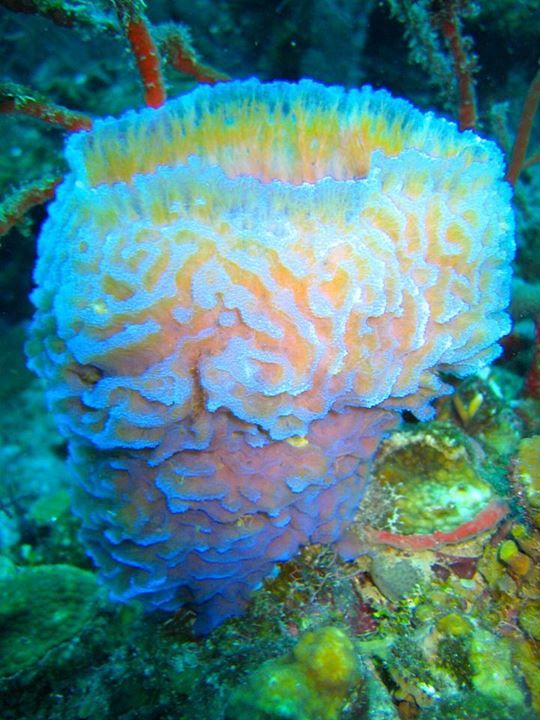Amazing Facts and Secrets of Natural Sea Sponges

Natural sea sponges are one of the most fascinating and ancient organisms on Earth. Often overlooked, these simple creatures hold a wealth of secrets and play a vital role in marine ecosystems. From their unique biology to their surprising uses, sea sponges are a testament to the wonders of nature. Let’s dive into the amazing facts and secrets of sea sponges, these underwater marvels.
Contents [show]
1. Sea Sponges Are Ancient Living Fossils
Sea sponges have been around for over 600 million years, making them one of the oldest multicellular organisms on the planet. Fossil records show that sponges existed long before dinosaurs roamed the Earth. Their simple body structure has remained relatively unchanged over millions of years, earning them the title of “living fossils.” This longevity is a testament to their adaptability and resilience.
2. They Are Not Plants, But Animals
Despite their plant-like appearance, sea sponges are actually animals. They belong to the phylum Porifera, which means “pore-bearing.” Unlike most animals, sponges lack organs, tissues, and even a nervous system. Instead, their bodies are made up of a network of cells and channels that allow water to flow through them. This unique structure enables them to filter food and oxygen from the water.
3. Master Filter Feeders
Sea sponges are nature’s ultimate filter feeders. A single sponge can filter thousands of liters of water each day, removing bacteria, plankton, and organic particles. This not only provides the sponge with nutrients but also helps maintain the clarity and health of the surrounding water. In fact, sponges play a crucial role in keeping marine ecosystems balanced by recycling nutrients and improving water quality.
4. Remarkable Regeneration Abilities
One of the most astonishing secrets of sea sponges is their ability to regenerate. If a sponge is broken into pieces, each fragment can grow into a completely new sponge. This remarkable regenerative capability has made them a subject of scientific research, particularly in the fields of medicine and biotechnology. Scientists are studying sponges to understand how their regenerative properties could be applied to human tissue repair and regeneration.
5. A Treasure Trove of Bioactive Compounds
Sea sponges are a rich source of bioactive compounds, many of which have potential medical applications. Over the years, researchers have discovered that sponges produce chemicals with antibacterial, antiviral, and anticancer properties. For example, the drug Ara-C, derived from a sponge compound, is used to treat leukemia and lymphoma. The search for new sponge-derived medicines continues, making them a valuable resource for pharmaceutical research.
6. Symbiotic Relationships with Other Organisms
Sea sponges often form symbiotic relationships with other marine creatures. For instance, some shrimp and small fish live inside sponges, using them as a safe haven from predators. In return, these organisms help keep the sponge clean by feeding on debris and parasites. Additionally, certain sponges host photosynthetic bacteria or algae, which provide them with nutrients through photosynthesis.
7. Natural Sea Sponges for Human Use
For centuries, humans have harvested natural sea sponges for various purposes. Their soft, absorbent, and durable texture makes them ideal for bathing, cleaning, and even painting. Unlike synthetic sponges, natural sea sponges are biodegradable and eco-friendly. They are also hypoallergenic, making them a popular choice for people with sensitive skin.
8. Sponges as Environmental Indicators
Sea sponges are highly sensitive to changes in their environment, making them excellent bioindicators. Scientists use sponges to monitor water quality and detect pollution in marine ecosystems. By studying the health and composition of sponge populations, researchers can gain valuable insights into the impact of climate change, ocean acidification, and human activities on the ocean.
9. Diverse and Colorful Species
There are over 9,000 known species of sea sponges, ranging in size, shape, and color. Some are as small as a few millimeters, while others can grow to be several meters tall. They come in a variety of colors, including yellow, orange, purple, and blue. Their diverse forms and hues add to the beauty and complexity of coral reefs and other marine habitats.
10. Sponges and the Carbon Cycle
Sea sponges play a surprising role in the global carbon cycle. When sponges consume organic matter, they convert it into detritus, which sinks to the ocean floor. This process helps sequester carbon, reducing the amount of carbon dioxide in the atmosphere. By contributing to carbon storage, sponges indirectly help mitigate the effects of climate change.
Conclusion
Natural sea sponges are far more than simple underwater creatures. They are ancient, resilient, and incredibly versatile organisms that contribute to the health of marine ecosystems and offer potential benefits to humanity. From their regenerative abilities to their role in medical research, sponges continue to amaze scientists and nature enthusiasts alike. The next time you encounter a sea sponge, whether in the ocean or in your bathroom, take a moment to appreciate the incredible secrets and facts that make them such a vital part of our natural world.





